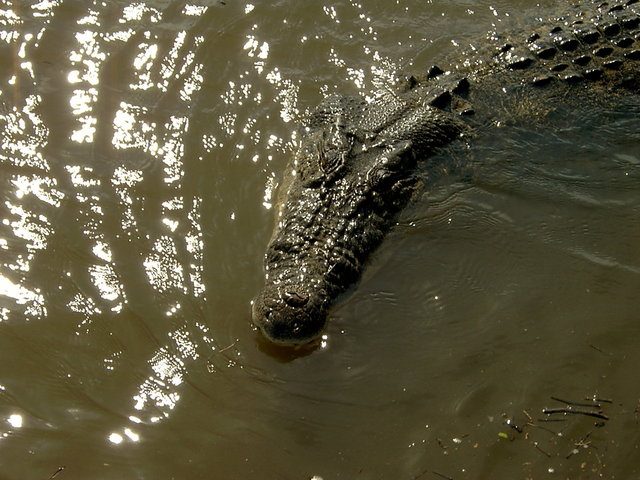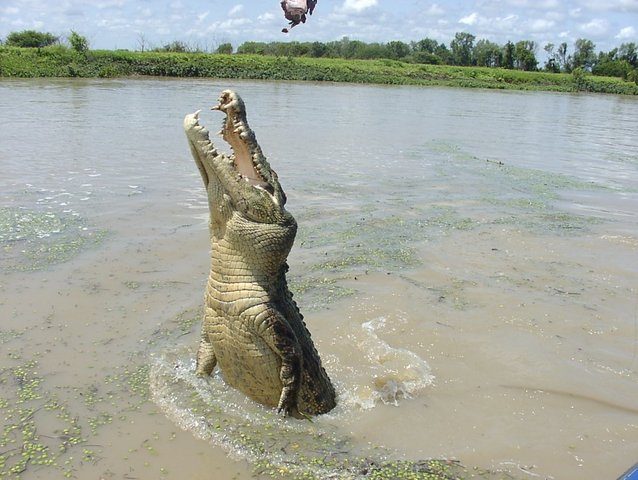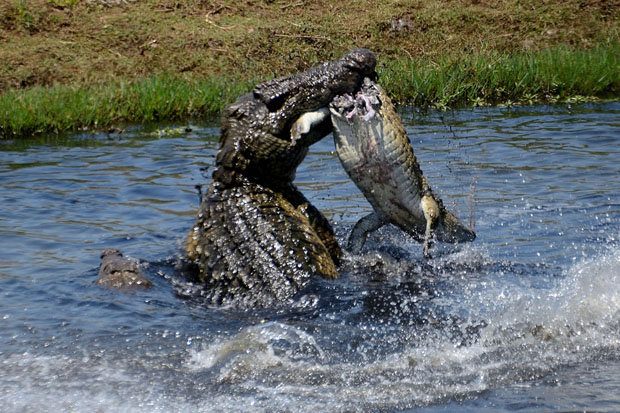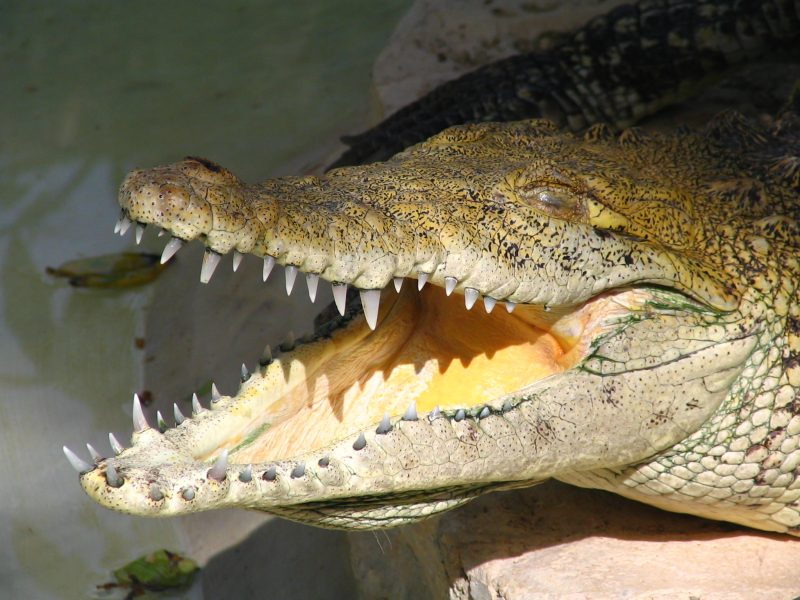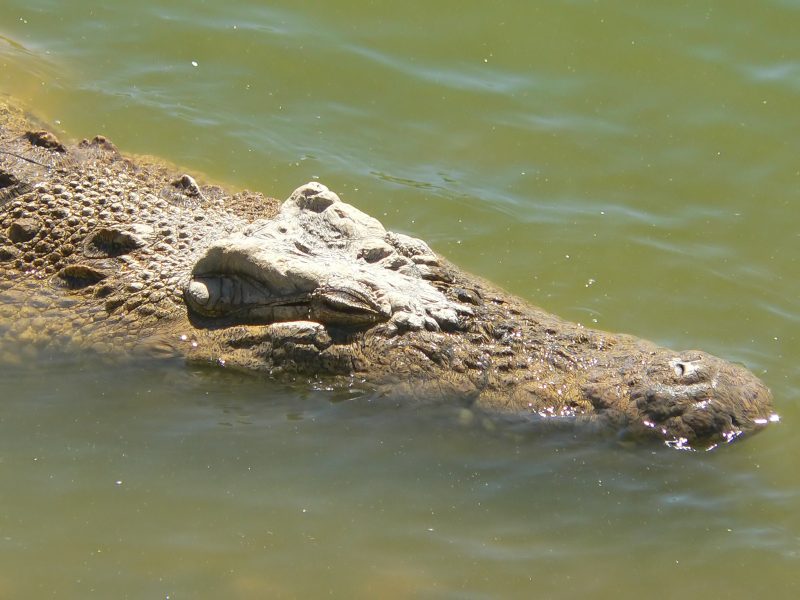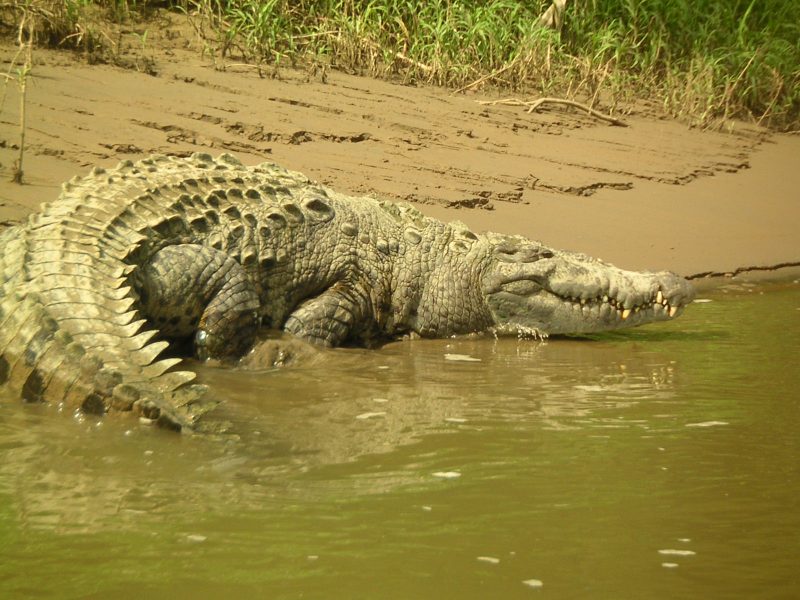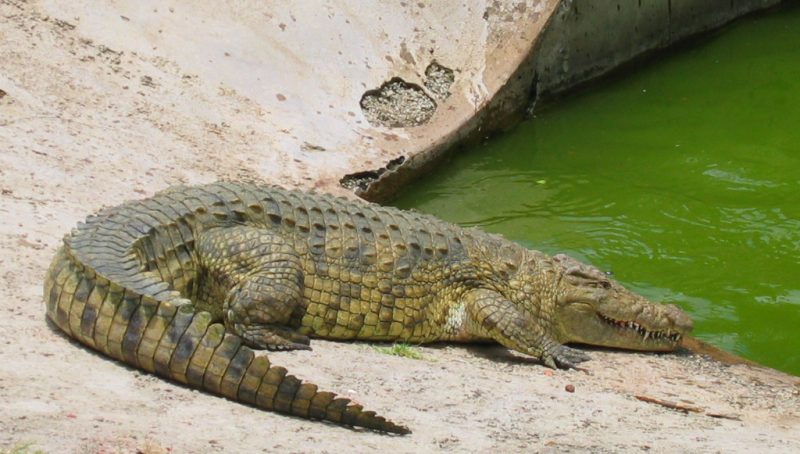Rough Dining Behaviour Of Nile Crocodile
One of the largest crocodilians is the Nile crocodile found in eastern Kenya. It is a marine predator that has adapted and evolved over centuries. It has a streamlined body, a powerful tail, and webbed hind feet. But the most distinguishable feature of a Nile crocodile is the enlarged tooth on the lower jaw, which juts out and is visible when it keeps its mouth closed. As the size of its body increases, its taste bud and appetite changes as well. And what transforms with that is its food hunting behavior. However, what remains unchanged is the human-crocodile conflict in the wild.
Shift in diet
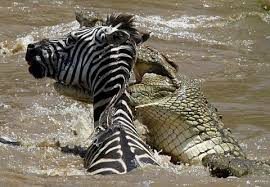
The twirling method is called a death roll, which involves jerking the head vigorously, or twisting or spinning on its axis
Crocodiles are carnivores, and they eat only meat. The diet of the carnivorous predator changes as they age. Nile crocodile hatchlings, i.e. the young ones, feed on insects, snails, spiders, gastropods and mussels as well as all kinds of crustaceans, and amphibians. The youth feed mostly on frogs, toads and small fish such as Tilapia and Labeo. The sub-adults feed on reptiles such as terrapins, snakes, pythons, water-birds, rodents, and crabs. As they grow into adults, they eat turtles, birds, and small mammals. But with old age, the food changes even further. A fully grown up mature adult crocodile will pull any big animal such as hippo, porcupine, warthog, hyena, baboon, impala, wildebeest, antelope, buffalo, the young giraffe, elephant and zebra beneath the water. It can leap up to catch nesting birds and attack any of those big mammals including other crocodiles.
Style of attack
In addition to excellent night vision and a good sense of smell, the Nile crocodile possesses sensory pits in the scales of its jaws that it uses to detect vibrations and movement in the water. The eyes, nostrils, and ears are on top of the head, which allows the crocodile to lie flat, almost entirely submerged in the water and hidden from its prey. The crocodile strategically uses this radar system and facial features along with its 68 teeth to its advantage when targeting a victim.
When an animal approaches the water hole, the crocodile will launch itself forward in a lightning attack. The crocodile exerts tremendous pressure using its massive jaws while clamping and holding onto their prey. Like other crocodilians, a Nile crocodile can bite but cannot chew or break off small pieces when hunting larger animals. As a solution, it drags them underwater. It then kills the animal by drowning or crushing it. A valve in the throat allows it to open the mouth to hold the victim underwater without water entering its throat. Then using a twirling method, it tears off large flesh chunks and swallows them whole. The twirling method is called a death roll, which involves jerking the head vigorously, or twisting or spinning on its axis. Groups of crocodiles use each other for leverage to perform these during a kill.
When taking the carcass on the water’s edge, the crocodile raises its body’s forequarters above the water surface and throws its entire body forward onto dry land. As crocodiles cannot swallow underwater, they keep their head above the surface. Although it prefers fresh food, it can even scavenge carrion. Thick-skinned prey is left to rot among submerged tree roots or under overhanging banks until one of them dismembers it.
Intermission between meals
After eating their meals, crocodiles swallow small stones that grind the food in the stomach. It aids digestion. They have an ectothermic metabolism, which means slow metabolism. It allows them to survive long periods without food, but they can eat up to half their body mass. During summer an adult will consume once in two to three weeks. Sub-adults eat once a week while juveniles eat daily. Their enzymatic digestive juices completely digest bones, hooves, and feather. Interestingly, however, being poikilothermic animals, food digestion of crocodiles is by the use of high temperatures.
Conflicts with human
The crocodile has earned itself a well-deserved reputation not only as a meat-eater but also as a vicious man-eater. The proximity of much of the habitat of the Nile crocodile to people and the virtually indiscriminate diet means an estimate of up to 200 people each year are eaten by a Nile crocs. Understandably, due to this, conflict with humans presents the greatest threat. As a dangerous predator, people are often intolerant of crocodiles. For example, crocodiles come into conflict with fishers when trying to remove fish from the nets. Hence, the killing of adult crocodiles in retaliation to the destruction of nests is common. Also, crocodile skin is very much in demand. It is used to make leather. Therefore, it resulted in massive population declines due to hunting in the 1960s.
Successful conservation efforts
Ironically, exploitation of crocodiles for skins and meat has been a valuable tool in its preservation. It has provided an incentive for conservationists to protect the species. Now, most international trade of crocodile products is banned, with a provision for commercial utilization and controlled trade in the form of ranching. According to this system, hatchlings or eggs are taken from the mother crocodiles in the wild and reared in captivity. A proportion of it goes back to the wild. This practice has helped boost its numbers as it improves its survival rate. These initiatives are thought to be responsible for the elimination of illegal trade of crocodiles. Although now relatively abundant and secure in Kenya, Nile crocodile populations are significantly depleted in the central and western Africa, not only due to hunting but also due to ongoing habitat loss.
It is an interesting fact to note that the only threat to the ferocious predator lying low seeking out the vulnerable victims is humans, who have strived hard and successfully managed to increase its once depleting population. So, are humans still a threat to crocodiles? Perhaps not. But lower beings have no conscience or consciousness. Humans are still an item in its list of diets. Thus, crocodiles continue to be a threat to people.
5 Frequently Asked Questions About The Nile Crocodile Behaviour
To receive a colourful digibook about crocodile with videos, images and text, please fill out the following form or simply email us on safaris@safari-center.com

